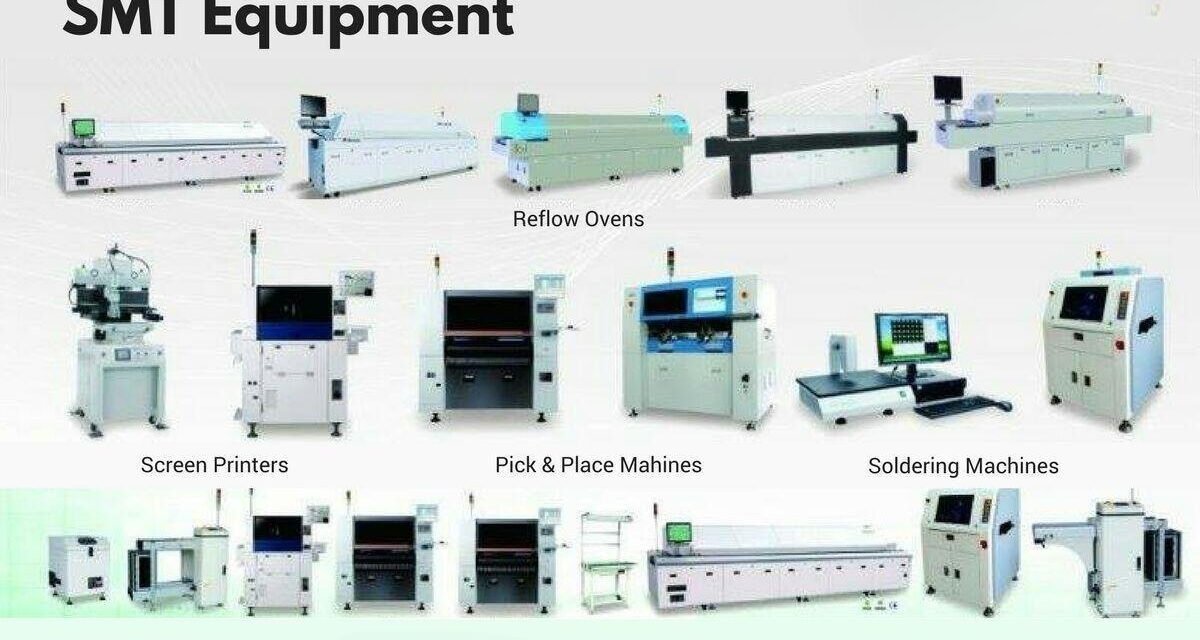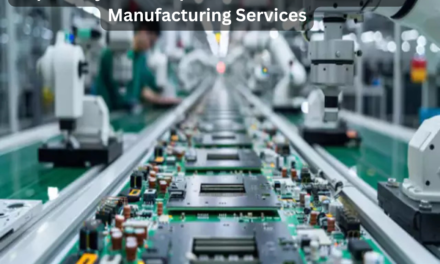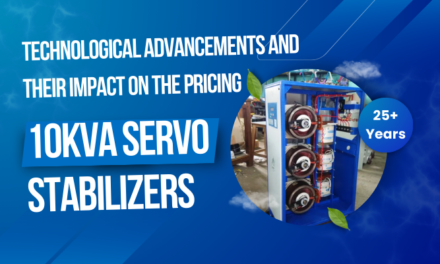Surface Mount Technology (SMT) assembly involves multiple high-precision machines that work together to mount electronic components onto a printed circuit board (PCB). The SMT manufacturing process is highly automated, ensuring speed, accuracy, and efficiency. Below are the key types of SMT equipment used in electronics manufacturing.
1. Solder Paste Printer (Screen Printer)
Function:
- Applies solder paste onto the PCB’s surface in precise locations where components will be mounted.
- Uses a stencil (solder mask) to ensure correct paste application.
Key Features:
- Automatic alignment and inspection systems for accurate paste deposition.
- Squeegee mechanism for even paste spreading.
- Vision systems to detect misalignment or insufficient paste.
Importance:
- Ensures strong electrical connections between SMD components and PCB pads.
- Reduces solder defects like bridging, insufficient paste, or misalignment.
2. Automated Pick-and-Place Machine
Function:
- Picks up electronic components (SMDs) from feeders or reels and places them onto the PCB with high speed and precision.
Key Features:
- Vacuum suction nozzles for picking up components.
- Vision-guided alignment systems for precise placement.
- Multi-head configurations for handling multiple components simultaneously.
- High-speed operation, placing thousands of components per hour.
Importance:
- Increases production speed and accuracy.
- Reduces manual labor and human error.
- Ensures correct component orientation and alignment.
3. Reflow Soldering Oven
Function:
- Melts and solidifies solder paste, creating strong electrical and mechanical bonds between components and the PCB.
Key Features:
- Multi-zone heating system for controlled temperature profiling.
- Preheat, soak, reflow, and cooling zones for optimal soldering.
- Nitrogen atmosphere options for oxidation prevention.
Importance:
- Ensures reliable and uniform solder joints.
- Prevents issues like cold solder joints or thermal damage.
- Supports lead-free soldering, compliant with RoHS regulations.
4. Automated Optical Inspection (AOI) Machine
Function:
- Scans PCBs using high-resolution cameras to detect soldering and component placement defects.
Key Features:
- 3D imaging for precise height and depth analysis.
- AI-powered defect recognition for detecting missing, misaligned, or incorrect components.
- Real-time feedback system to correct assembly errors.
Importance:
- Identifies soldering defects, misplacements, and component issues early.
- Reduces production errors and improves yield rates.
- Speeds up quality control without manual inspection.
5. X-Ray Inspection System (AXI – Automated X-ray Inspection)
Function:
- Uses X-rays to inspect solder joints and hidden connections (e.g., under Ball Grid Arrays – BGAs).
Key Features:
- Penetrates multi-layer PCBs to detect internal defects.
- High-resolution imaging for quality control.
- Detects voids, cracks, and solder bridges under components.
Importance:
- Essential for complex PCBs with hidden joints.
- Ensures reliability in automotive, aerospace, and medical devices.
- Helps maintain high-quality soldering standards.
6. In-Circuit Tester (ICT) / Flying Probe Tester
Function:
- Tests electrical functionality of assembled PCBs by checking component values, shorts, and open circuits.
Key Features:
- ICT: Uses bed-of-nails test fixtures for high-volume testing.
- Flying Probe Tester: Uses probes to test circuits without fixtures, ideal for low-volume or prototype testing.
Importance:
- Identifies electrical defects before final assembly.
- Ensures component integrity and connectivity.
- Reduces failure rates in mass production.
7. Conformal Coating Machine (Optional)
Function:
- Applies a protective coating over PCBs to shield against moisture, dust, and chemicals.
Key Features:
- Automated spray or selective coating systems.
- UV-curable and silicone-based coatings.
- Programmable coating paths for precision application.
Importance:
- Enhances PCB durability and reliability in harsh environments.
- Used in automotive, aerospace, and medical electronics.
- Prevents corrosion and electrical failures.
8. Depaneling Machine (PCB Cutting and Routing System)
Function:
- Separates individual PCBs from a multi-board panel after assembly.
Key Features:
- Laser, mechanical, or router-based cutting systems.
- Stress-free cutting methods to avoid PCB damage.
- Automated alignment for precise separation.
Importance:
- Speeds up final PCB processing.
- Reduces mechanical stress on components.
- Improves PCB edge quality for further assembly.
9. Selective Soldering Machine (for Mixed SMT and THT Components)
Function:
- Used for soldering through-hole components on a PCB that already has SMT components.
Key Features:
- Programmable soldering paths for precision.
- Controlled flux application to prevent excess solder.
- Heated nozzles to selectively solder components without damaging nearby SMT parts.
Importance:
- Eliminates manual soldering for mixed-technology PCBs.
- Improves soldering accuracy and reliability.
- Reduces thermal stress on sensitive components.
10. PCB Cleaning System (Optional for High-Reliability Products)
Function:
- Removes flux residues, dust, and contaminants from assembled PCBs.
Key Features:
- Ultrasonic or solvent-based cleaning for precision.
- Automated conveyor-based systems for high-volume cleaning.
- Water-based and eco-friendly cleaning options.
Importance:
- Improves long-term reliability of PCBs.
- Reduces electrical failures caused by contamination.
- Essential for medical, aerospace, and military electronics.
Conclusion
Surface Mount Technology (SMT) manufacturing relies on a highly automated assembly process that includes solder paste printing, pick-and-place mounting, reflow soldering, and inspection systems. The use of AI-driven quality control, X-ray inspection, and selective soldering enhances the accuracy, speed, and reliability of electronic manufacturing.
Hashtags
#SMTEquipment #SurfaceMountTechnology #SMTManufacturing #ElectronicsProduction #PCBA #PCBAssembly #StencilPrinting #SolderPaste #SMTStencil #PCBPrinting #PickAndPlace #ComponentPlacement #AutomatedAssembly #HighSpeedPlacement #SMTAssembly #ReflowSoldering #ReflowOven #SolderingTechnology #SMTSoldering #PrecisionSoldering #SMTInspection #AutomatedInspection #XRayInspection #AOI #QualityControl #SMTConveyors #PCBHandling #AutomatedManufacturing #FactoryAutomation #SmartProduction #Industry40 #AIinManufacturing #IoTDevices #AdvancedAutomation #SmartManufacturing














